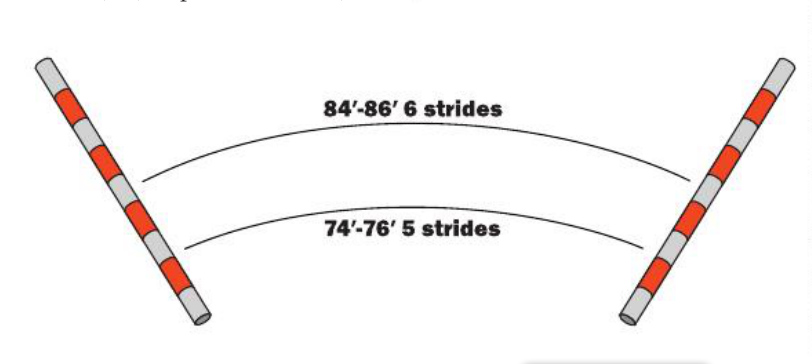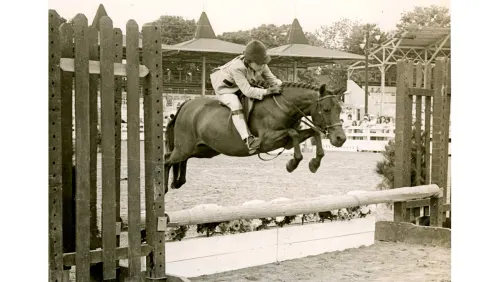Although she’s an accomplished rider in the hunter and jumper divisions, Shachine Belle has a true passion for teaching.
When she isn’t traveling to shows up and down the East Coast, Belle can be found at her Belle Equestrian LLC in East Greenwich, R.I., where she works with her equitation students on exercises they’re likely to see at the major finals.
Though this exercise looks simple, for Belle, it’s about making sure the rider can make a decision quickly and smoothly on course.

“It works on your pace and track,” she said. “It’s also helping us work on landing your leads—making sure your horse is ambidextrous. Some equitation courses have the striding with the option of going forward or staying out [on the track]. It makes you use both your hands and both your legs to ride the shape, or to make your horse stay in.”
Belle, 40, keeps the fences low, about 3′ or 3’3″, and makes them verticals.
ADVERTISEMENT
“I don’t necessarily want the horse to jump well; I want the riders to think about holding their position and using the following release but not interfering with the horse’s jumping style,” she explained.
She has riders canter the bending line from both directions, first riding the curve from center to center in six strides, then trying to take the inside line in five strides.
“We work on doing five strides, six strides, five strides, six strides, making it look the same without changing the stride length,” she said. “Know that if you’re on the inside track, sometimes you don’t have to go faster. Some riders go faster when they know they have to leave a stride out, instead of thinking about the inside track.”
According to Belle, a major challenge of indoor equitation finals is that the small rings encourage riders to cut in. By making sure to keep to the center of the exercise, horses and riders learn to not cut corners.
“For horses that don’t like a certain lead or like to cut in, we’ll use the outside track to try to teach the horse and rider to land the correct lead, stay tall, and hold the natural bend of the top of the ring,” she said.
















